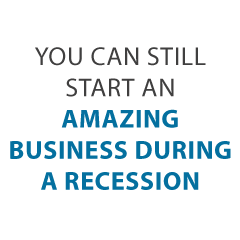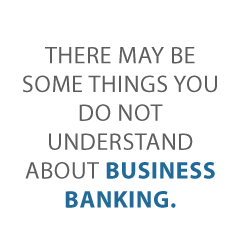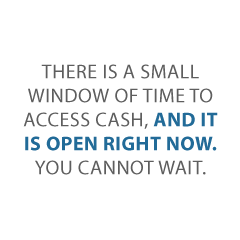The Next Recession and Business Funding
The United States economy has been through any number of changes over the years. Our economic fortunes can depend on advances in technology, diplomatic ties (or cutting those ties), the weather, and more. Business credit, fortunately, is an asset which you can build even during economic downturns. However, you may need to get a little creative with it, and with other forms of business funding. These can even work for the next recession.
There have been five major economic downturns since the start of the twentieth century, plus a number of smaller ones. Some of those smaller downturns, in hindsight, were harbingers of the bigger ones to come.
The Great Depression vs. The Next Recession
Historically, the worst economic downturn – by far – was the Great Depression of 1929. Not only was it ugly in its own right, it was also an issue due to how starkly it contrasted to the 1920s. During the 1920s, until the Great Depression, the economy grew a staggering 42%! https://www.thebalance.com/the-great-depression-of-1929-3306033
The main issues causing the Great Depression were speculation in the stock market and fictitious reserves at banks.
The stock market had begun rising in 1924, and grew at a clip of 20% per year. The number of shares traded doubled to 5 million per day. Brokers would lend 80 – 90% of the price of the stock. Because of this, investors only had to put down 10 – 20%.
Furthermore, only one-third of the nation’s 24,000 banks belonged to the Federal Reserve System. By 1929, there were banks holding fictitious reserves. This happened because checks were counted as reserves before they cleared. As a result, these checks were double-counted by the sending bank and the receiving bank.
This economy, running like a house on fire, burned itself out. Between fictitious reserves and stock speculation, the 1929 economy was the equivalent of vaporware.
Black Thursday
The Great Depression kicked off with “Black Thursday,” October 24, 1929. Traders sold 12.9 million shares of stock in one day. This was triple the usual amount. Stock prices fell 23% in the first four days of the stock market crash of 1929. This started an economic depression that lasted 10 years.
Learn more here and get started toward growing small business credit, even in the next recession.
How It Relates to Today’s Business Funding
Fortunately, there are a number of safeguards in place to try to prevent much of what caused the big one. Bank reserves are handled more responsibly, and computers cut the chances of accidental double-counting. For business funding, this means banks and other lenders are more likely to be solvent in the future.
As for the stock market, such unbridled selling wouldn’t happen today, as controls are built in to stop runaway selloffs.
1970s Stagflation vs. The Next Recession
During the 1970s, the annual U.S. inflation rate rose in the 5 – 10% range. Contrast this to a 0 – 3% range typical of American peacetime. The Fed didn’t put a high priority on stopping inflation until Paul Volcker became chairman. And 1960s policymakers pushed to lower employment and keep it low, until at a certain point (about 4%), inflation started to take over. Nixonian wage and price freezes, and eliminating the good standard didn’t help, either.
But there were also supply issues, particularly with oil. In 1979, the price per barrel of West Texas Intermediate crude oil topped $100 (in 2016 dollars). It peaked at $117.71 the next April.
How It Relates to Today’s Business Funding
Stagflation is unlikely to recur, as there isn’t a second gold standard to untie the dollar from. And wage and price controls, proven to not work, likely won’t be tried again. Furthermore, the Fed works with a consistent plan these days. https://www.thebalance.com/what-is-stagflation-3305964
For business funding, this means lower interest percentage rates for when you need to pay back.
Learn more here and get started toward growing small business credit, even in the next recession.
1981 Recession to the Next Recession
From 1981 to 1982, net S&L income, which totaled $781 million in 1980, fell to negative $4.6 billion and $4.1 billion https://www.thebalance.com/fed-funds-rate-history-highs-lows-3306135
And from 1980 – 1983, 118 S&Ls with $43 billion in assets failed, costing the FSLIC an estimated $3.5 billion to resolve. https://www.fdic.gov/bank/historical/history/167_188.pdf
Also, there were also 493 voluntary mergers and 259 supervisory mergers of savings and loan institutions. By the end of 1982, there were 415 S&Ls with total assets of $220 billion. And these were insolvent based on the book value of their tangible net worth.
Unemployment was above 10% for 10 months. And it rose to 10.8% in November and December 1982, the highest level in any modern recession. Manufacturing, construction, and the auto industries were particularly affected.
Goods producers accounted for only 30% of total employment, but they suffered 90% of job losses in 1982. 75% of all job losses in the goods-producing sector were in manufacturing. And the residential construction industry and auto manufacturers both ended the year with over 20% unemployment.
The economy shrank for six of this crisis’ 12 quarters. The worst was Q2 1980 at 8%. https://www.federalreservehistory.org/essays/recession_of_1981_82
How It Relates to Today’s Business Funding
The ultimate cost of the savings and loan crisis is currently estimated at approximately $160 billion.
More extensive banking regulations are designed to prevent a second S&L crisis. Furthermore, with the rise of the service economy, there simply are fewer manufacturing jobs to lose. Is that better? In a gig economy, where people make their own work, the idea of depending on just one job in a large company may strike some as quaint.
When it comes to business funding, fewer lenders means financing creativity is a must.
The 9/11 Attacks and the 2001 Recession
Due to the four attacks, the Dow promptly fell 7.13%, closing at 8,920.70. This 617.78 point loss was the Dow’s worst single day drop at that time. Oil prices fell from $23.77 a barrel in August 2001 to $15.95 in December.
Because air traffic was stopped for a time, the airline industry lost $5 billion from the attacks. The four-day shutdown cost $1.4 billion alone.
On September 22, President George W. Bush signed into law $15 billion in federal loans.
But 9/11 wasn’t the only economic issue for the year. The economy had already contracted 1.1% in the first quarter of 2001, but it bounced up 2.1% in Q2. But the attacks made the economy contract 1.7% in the third quarter, extending the recession. Growth returned to 1.1% in Q4. https://www.thebalance.com/2001-recession-causes-lengths-stats-4147962
The 2001 recession began in March 2001 and lasted through November 2001. Unemployment hit 5.7% in December 2001. https://files.stlouisfed.org/files/htdocs/publications/review/03/09/Kliesen.pdf
How It Relates to Today’s Business Funding and the Next Recession
Another terrorist attack (or series of attacks) is certainly possible. Plus the airline industry is still feeling the effects of 9/11, as there are people afraid to fly. And there are people who see it as inconvenient, given long check-in and security lines.
The four terrorist attacks on September 11, 2001 still affect the American economy. https://www.thebalance.com/how-the-9-11-attacks-still-affect-the-economy-today-3305536
When it comes to business funding, if a similar crisis were to occur, there could be another release of federal loan money. The 2001 recession was the mildest of the five, so it would appear such a strategy can work.
Learn more here and get started toward growing small business credit, even in the next recession.
2008 Financial Crisis
This one is considered by many economists to have been the worst financial crisis since the Great Depression of the 1930s. https://www.thebalance.com/2008-financial-crisis-3305679
Bank lending to small firms rose from $308 billion in June 1994 to a peak of $659 billion in June 2008. But it then declined by almost 18% to only $543 billion in June 2011. https://www.sba.gov/advocacy/how-did-financial-crisis-affect-small-business-lending-united-states
And bank lending to all firms rose from $758 billion in 1994 to a peak of $2.14 trillion in June 2008 and then declined by about 9% to $1.96 trillion as of June 2011.
Another issue was the bankruptcy of investment bank Lehman Brothers on September 15, 2008.
Banks had already stopped lending to each other due to fears of potential losses on high-risk US mortgages. The crisis overhauled investment banks, and some closed down. Penalties paid by banks between 2009 and 2016 were about $321 billion (63% North American banks and 37% European banks).
Job Losses
Between November 2008 and April 2009, job losses averaged nearly 800,000 per month. And during those years, the economy contracted at a staggering rate of 8.3%.
The Dow Jones Industrial average fell to as low as 6,400.
In 2007, small businesses lost more jobs and took longer to recover during the financial crisis. From 2007 to 2009, non-farm payroll employment declined by about 8.7 million, a drop in levels not matched in the entire postwar period. And in December 2007, jobs at small businesses fell 60% from the pre-crisis peak.
In February 2010, the private sector started adding jobs again. Businesses less than two years old accounted for one-quarter of gross job creation even though they employed less than 10% of workers.
How It Relates to Today’s Business Funding
The biggest issue for business funding is that banks have become more risk averse in the recovery.
Small businesses continue to report difficulty finding credit. About 45% did not apply, presumably because they did not need credit. Another 20% did not apply because they were discouraged from doing so. They either felt they would not qualify or they thought the process would be too hard to justify the time commitment.
And based on a regional survey data from the Federal Reserve Bank of New York, about 37% of all small businesses applied for credit in the fall of 2013. https://www.fundera.com/blog/happened-americas-small-businesses-financial-crisis-six-years-start-crisis-look-back-10-charts
Small business owners report that competition among banks for their business peaked in the 2001 to 2006 period and has declined from 2006 to the present.
Business Funding: What Today Looks Like
The Number of Banks is Falling
The number of banks and thrifts in the U.S. has been declining steadily for 25 years because of consolidation in the industry and deregulation in the 1990s that reduced barriers to interstate banking. https://www.fundera.com/blog/happened-americas-small-businesses-financial-crisis-six-years-start-crisis-look-back-10-charts
The concentration of assets in ever‐larger financial institutions is problematic for small business owners. This is because large banks are less likely to make small loans.
The Federal Reserve Bank of Atlanta recently noted that on a scale of 1 (offering no loan or line of credit to small businesses) to 4 (offering the full amount requested), community banks ranked 2.4 versus 2.3 at regional banks and 1.85 at large national banks.
How Small Businesses are Faring
87 % of small business owners who got a loan obtained theirs from a regional or local financial institution. But this was when it was their primary institution. Small businesses consistently appear more willing to ask for credit when their bank is a regional or community bank. And they appear to be more successful in their requests.
From August 2008 until early 2012, small businesses reported sales as their biggest problem. And from 2007 to 2010, income of a typical household headed by a self-employed person declined 19% in real terms.
From 2004 to 2007, about half of all small business owners surveyed reported revenue for the last 12 months as either “very good” or “good”. That number fell to as low as 21% in 2009 and 2010. And it has has only modestly recovered over the past few years. It’s stayed at about 35% for most of the past few quarters.
65% of small business owners said their cash flow was “very good” or “good” in the first quarter of 2006. Contrast with a range of just 30 to 40% reporting good cash flow for most of the recovery, although the number rose slightly to about half as of the second quarter of 2014.
What Will the Next Recession Look Like? Where Will it Come From?
While no one has a crystal ball, one thing is for certain. Whenever you start to see a bubble, it will eventually burst. And that is true whether the bubble is in the stock market, or S&L loans, or housing.
Economic downturns also, inevitably, mean banks get more cautious. And since people may have less discretionary cash to spend, crowdfunding may become a less viable funding option. The same may turn out to be true for angel investing and venture capital.
What Does this Mean to You?
The next recession doesn’t have to end your business dreams. Bank loans may be tightening, but business credit is still a fantastic way to get business funding. By bypassing lending institutions, you increase your chances for business funding. This is particularly true if your business is new.
Other options include online lenders, microloans, and grants. We also like unsecured business financing, and AI credit lines through Fundbox. Revenue lending and financing (from places like PayPal and Square) is another option. Accounts receivable financing can also fund your business when banks say no.
You may find these alternate business funding sources so receptive that you tap them even when the economy is good. So be prepared for the next downturn, and build business credit. You never know when you’re going to need it.
The post Business Funding and the Next Recession appeared first on Credit Suite.











